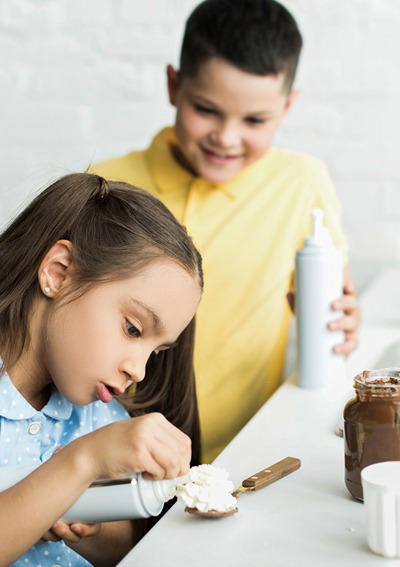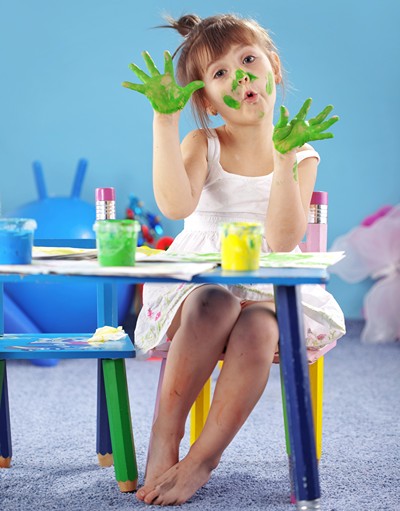How to Check In With Your Child’s Mental Health
Kids experience emotional ups and downs as they grow. They inevitably go through periods of moodiness and fluctuations in academic performance. As a parent, you must ensure your child feels supported as they grow. However, it’s not always easy to know how they’re feeling, and many kids have a hard time opening up.
Learn why some kids find it challenging to open up with their parents and how you can help your child’s mental health.
What Is a Mental Health Check-In?
Mental health check-ins with your child involve asking about their feelings, moods and worries. It can start with a simple “How are you feeling today?” or discussing what’s been worrying your kid lately. This is essential to understanding what’s going on in your child’s life.
Around 20% of children in the U.S. have a mental, developmental, behavioral or emotional disorder, making regular mental health check-ins more important than ever.
Why Do Some Children Refuse to Open Up to Their Parents?
At first glance, a mental health check-in sounds simple. It can be challenging, especially when your child refuses to open up. Here are some reasons why children struggle with discussing feelings with their parents.
They Don’t Know What They Feel
This scenario is common among tweens and teens who don’t know how to navigate their feelings because they focus on how others feel and think first.
They’re Shy
Your child may struggle with opening up because they’re naturally quiet. Encouraging your kid to open up can be tricky if they have never been open with you before.
You’re Too Predictable
Did your child open up to you before? How did you react? The reason why your kid won’t open up to you is because they already anticipate your lecture. Your kid is more likely to tune out if they feel criticized after sharing their vulnerabilities or if you’re saying too much, which can be overwhelming.
They’re Hiding Something
Just because your child refuses to open up the first time you ask them doesn’t mean he lacks trust. Sometimes, all it takes is patience.
How to Start a Mental Health Check-In With Your Child
Get a sense of how your child is doing with these tips.
1. Establish a Routine
Children benefit from having a routine. A sudden change in routine can have negative impacts on their mental health. This could be caused by a change in their daily routine, like entering a new grade, or a change in yours, like working more hours.
Any time your child enters a new phase in life, help them establish a new routine. This could include a homework schedule, a new bedtime and a calendar to keep track of school and sports.
2. Keep an Eye on Behavioral Changes
Mood shifts are normal. However, it could be serious if a sign of distress lasts two weeks or more and disrupts your child’s regular functioning. Here are some signs to look out for:
- Appetite changes
- Missing school
- Irritability
- Drop in school performance
- Difficulty concentrating
- Withdrawing from social interactions
- Self-harm or discussing self-harm or death
Don’t hesitate to ask questions about more complicated topics, such as suicide. Express your concerns in a reassuring manner. This will make your child feel that they can trust you. If your child is feeling suicidal, you can call or text the Suicide Prevention Lifeline at 998.
3. Normalize Talking Openly About Mental Health
Conversations about feelings can be uncomfortable, but it’s essential in the household. To overcome discomfort among family members, initiate open discussions about mental health, as you would about any physical health concerns, such as the flu and allergies. Share how you’re coping with your own feelings.
You can also help them find spiritual or meditative ways to reflect on their mental health. If you are religious, you can try a 40-day prayer practice, during which they can express gratitude or ask for help. Non-religious practices that can provide similar comfort include meditation, journaling and positive affirmations. Encourage your child to identify and reflective practice that they enjoy and engage in it together.
4. Ask Open-Ended Questions
Questions like “Are you sad?” often elicit one-word responses, making it tricky to start a conversation with your child. Instead, reformulate the question into something like “Share how you feel today” to give them space to express their thoughts and feelings.
5. Let Them Know They Are Loved
Reassure your child that you’ll be there for them no matter what they do and feel. This is even more important if your child is particularly hard on themselves in response to their mistakes. Reminding them of your love and understanding will increase their feelings of safety and security in the home.
6. Encourage Professional Help if Needed
Don’t hesitate to seek help if you’re worried about your child’s mental health. Describe the behaviors that concern you. Talk to your child’s friends, teachers and other people close to them to see if they’ve noticed your kid’s behavioral changes.
Be Mindful of Your Own Well-Being
You know your child best, so don’t hesitate to initiate regular mental health check-ins. With these tips in mind, helping your kid navigate their feelings and worries will be more bearable. But remember, you cannot fully help others if you are not taking care of yourself.
Prioritize your own well-being as well. This may range from finding moments to recharge to seeking professional support when needed. In doing so, you’ll also be better equipped to talk to someone about therapy if they need it. This may include your own child if it’s necessary.
Additional Resources:
To learn more about mental health issues in children, check out this infographic:
Exploring-Mental-Health-Misdiagnoses-In-Children-ADHDOpen PDF
 Author bio: Cora Gold is the Editor-in-Chief of women’s lifestyle magazine, Revivalist. She strives to live a happy and healthy life with her family by her side.
Author bio: Cora Gold is the Editor-in-Chief of women’s lifestyle magazine, Revivalist. She strives to live a happy and healthy life with her family by her side.
Follow Cora on Facebook and LinkedIn.










